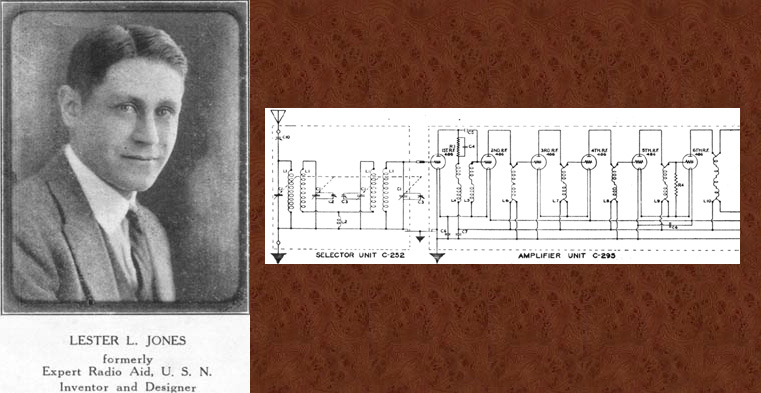The Technidyne Circuit

The "Technidyne" circuit is very unique. It was invented by Lester L. Jones who created
the Technidyne Corp. and provided licenses to manufacturers who did not want, or could not
afford to get an RCA license.
There were four known manufacturers who signed up to build radios using this circuit.
- Sparton (Sparks-Withington) in Jackson, Michigan
- AC-Dayton in Dayton, Ohio
- Continental Radio Corp (Slagle) in Ft Wayne, Indiana
- J.B. Ferguson in Long Island, New York
Sparton was the most prolific maker of the Technidyne with their "Equasonne" series.
AC-Dayton was the next and used the Techidyne in their "Navigator" series of radios.
Slagle was the third, however their circuit was different than Sparton's and AC-Dayton's.
I have a Slagle chassis that uses Sparton's Cardon C484/485 tubes. In comparison to the circuit within the patent, the Slagle follows it MUCH closer than the Equasonne or Navigator.
Ferguson made a model called the "Homer" though I'm not sure how many, if any were made.
 This advert appeared in Radio Retailer & Jobber Sept, 1927
This advert appeared in Radio Retailer & Jobber Sept, 1927
The circuit was unique as it put all the tuning up front and fed the signal from the tuner into
a broadband, untuned, self neutralizing amplifier.
In other words, where a standard TRF circuit was "tune-amplifier-tune-amplifier-tune-amplifier"
The Technidyne was "tune-tune-tune-tune--amplifier-amplifier-amplifier-amplifier"
It is very amazing that this circuit works at all, but it does.... and very well!
One unique advantage is that the 4 stage tuning section has a nice square flat-top selectivity curve
which allows better fidelity than other circuits. The main disadvantage was that it did
require a reasonable antenna for good performance. The amplifier provides a substantial
amount of gain for a circuit using conventional triodes, though it does require that
the tubes have tightly controlled grid to plate capacitance ratings. This was easy for
Sparton as they produced their own tubes, and the Cardon C484/485 and the battery operated C486 were the result.
The Technidyne was short lived as RCA put more pressure onto manufacturers who used it
saying it still infringed on their patents. AC-Dayton did not survive into the Depression.
Slagle and Sparton finally gave in to RCA and signed up for a
license. Slagle became Continental and eventually became Admiral Radio Corp.
The Technidyne enjoyed a brief moment of glory in the late 1920s then dissapeared as better
circuits such as the Superheterodyne, came into use.

 This advert appeared in Radio Retailer & Jobber Sept, 1927
This advert appeared in Radio Retailer & Jobber Sept, 1927